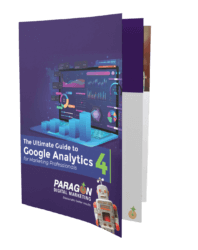How to Create a Customer Persona
Defining your customer personas will help you target your ideal customer and significantly improve your marketing strategy.
A customer persona is a fictional representation of your ideal client or a large segment of your buying audience. It can include everything from age and gender to likes and dislikes, and your company may have several personas.
So, how do you create a customer persona? This guide will help you identify and develop your customer personas so that you can tailor your marketing campaigns to speak directly to them! Let’s begin.
Identify Your Ideal Customer
Before you start creating a customer persona, you must first define who your ideal customer is. Ask yourself, if you could create the perfect customer, who would it be? What are their pain points, and how can your brand help them overcome those challenges?
You may be wondering why identifying your ideal client is so important to creating a customer persona. Revenue is revenue, right?
The key is that this information allows you to personalize your marketing efforts to those individuals that bring in the most revenue and have the highest lifetime customer value. Customers in today’s business environment do not want to be sold to as a number – they want personalization and to know that your brand understands and appreciates them!
Start with Demographics
You should start by considering their demographics, such as age, gender, location, income level, etc. What do they do for work? What are their lifestyles like, and what are their core values?
If you struggle with defining this part of the customer persona, try to reverse engineer it. Think about your brand and the products and services you offer – create a list of all the benefits you provide, and then think about who would be looking for that.
Use Research to Gain Further Insights
 While demographics are a great place to start when narrowing down your target audience, more detailed information is needed to create an accurate customer persona.
While demographics are a great place to start when narrowing down your target audience, more detailed information is needed to create an accurate customer persona.
Consider conducting surveys that ask your top clients open-ended questions about their lifestyles, motivations, and specific needs. The questions will likely vary based on your industry and unique product offerings, but the end goal is to obtain actionable information that can help you better understand what drives their behavior.
Ask questions similar to these:
- When did you decide you needed one of our products?
- What challenges does our product help you solve?
- Did you have any doubts or hesitations before purchasing?
- How do you use our product in your daily life?
Use the information that you gather from these surveys in combination with the demographic customer data you have already collected. From these details, you should be able to build the foundation of your customer persona!
Start Developing the Customer Persona
Now that you have gathered all the defining characteristics of your ideal client, interviewed your top customers, and compiled all of the data, it is time to start developing your customer persona.
Create a summary of each customer persona, almost as if it were their biography – so you have to give each one of them a name!
Summary
Begin by writing an “about them” section that includes a summary of the information you compiled. Let’s use a sample customer persona named Michelle.
Describe her demographics: where does she live and work? What does she do for fun? Try to include as many details as possible so that you can create a clear image of the customer persona.
Describe the Use Case
Next, detail out the use case for your product. This will help you understand how the customer will use your product, and what goals they are trying to achieve with it.
In this portion of the customer persona, you will address their pain points: the challenges they are trying to overcome by working with your brand. Not only should you describe how your product will allow them to fix those issues, but also what the pain points associated with the previous approach were.
This indicates the buying trigger, which is what leads them to look for a product like yours – as well as the other choices they have available.
This will highlight the benefits that they get from buying your product, so you can communicate that to them throughout the buyer’s journey.
Marketing Preferences
Since the ultimate goal of developing a customer persona is to improve your marketing efforts, your outline should include a description of their marketing preferences.
How do they normally access content – do they prefer social media? Do they use a computer or a mobile device more often?
You should also consider how often they would like to receive information, and how much. Some individuals access their social media platforms more often than others, and the same preferences exist between daily and weekly updates.
Marketing preferences should also include what content they engage with most. This could be blog posts, videos, social posts, or analytical reports. The key is to determine what content they are looking for and what events trigger this consumption.
Introduce Them to Your Firm
Once you have named your customer persona and created their biography, you should introduce them to your firm. Give your sales and marketing teams, along with other departments, a copy of the customer persona you created.
Presentation matters – remember you want your teams to treat them like a real person. Consider including images for each persona that will help them feel more real. Also, show them sample conversations and walk them through their unique buyer’s journey.
Teach all of your staff how they should talk to each persona. They should have a dedicated elevator pitch that will talk about your brand in a way that will resonate with them. It is essential that the messaging is consistent so that your marketing can be as effective as possible!
Use These Insights to Drive Marketing Actions
Now that we understand the demographics surrounding our ideal client and have analyzed their journey from awareness to deciding to buy your product, it is time to use those insights to drive your marketing strategy.
Start creating personalized content to help each of your customer personas throughout the entire buyer’s journey. Focus on where you know they spend the majority of their time online so that you can tailor your marketing spend to maximize engagement with them.
Do your best to speak their language when you communicate with your buyer persona. Do they like hashtags and emojis? If so, don’t be afraid to use them!
The goal is to create content that is specific to each of your customer personas. Incorporate everything that you know about them into your marketing campaigns so that you can engage with your target audience on a personal level.
What charities do they support? Perhaps it may be a great opportunity to partner with a cause that they feel strongly about. The same goes for working with influencers that your persona’s love – but be careful to watch your budget and choose wisely when it comes to influencer marketing!
Creating a customer persona starts with defining your ideal client. Perform customer research to identify their demographics, lifestyle, and other personal factors that can help you understand their wants and needs. Next, you will combine this knowledge with the buyer’s journey to build a marketing strategy that will connect with them each step of the way! Read our marketer’s guide next: A Marketer’s Guide to Identifying Your Buyer’s Journey.












